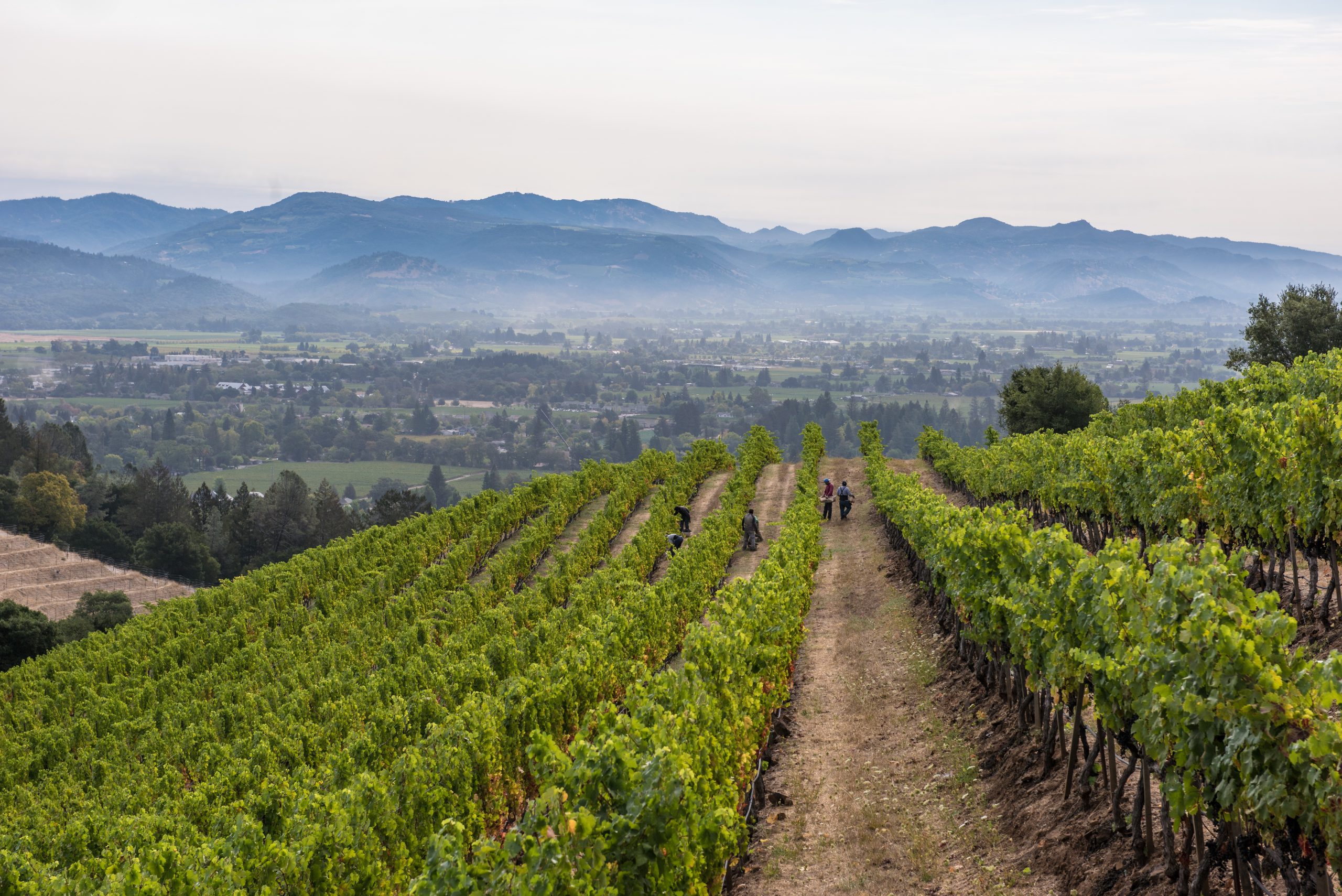You’ve Got to Have the Right Climate
When it comes to producing great wine, you must start with growing great grapes. Cabernet Sauvignon vines are best suited for a sunny, warm (and not too hot) climate, so that the grapes ripen slowly. While many places in California are quite hot, and increasingly so, Napa Valley’s location on the San Pablo Bay causes an induction effect at night that delivers morning cloud cover. The morning fog slows certain aspects of ripening. Additionally, Napa Valley AVAs that are above the clouds—for instance, Howell Mountain and Atlas Peak—have higher elevation to their advantage. Higher temperature shifts between night and day in the hills slow certain aspects of ripening, maintaining acidity.
The Quality of Napa’s Soils
Many different soil types are suited for Cabernet Sauvignon, but ultimately what’s important is good drainage and not too much soil fertility. Low fertility puts the vines in a state of stress earlier in the growing season, which shifts the vine’s focus from growing leaves to ripening grapes. What makes Napa Valley special—especially as a New World region—is a prevalence of volcanic soils that inexplicably add an earthy, “dusty” taste to Napa’s best wines. Since earthiness and minerality are not common in New World wine regions, this “dustiness” adds complexity to Napa wines.
Where the Best Napa Valley Cabernet Sauvignon Wines Come From
There really isn’t a single best spot in Napa Valley for Cabernet Sauvignon, because it’s a matter of taste. That said, we’ve observed two distinct styles of Napa Cab based on where they grow. Each have their own style and unique features, so it’s ultimately up to you to decide.

Wines from the Valley Floor
Lush and Refined
Flavors
Blueberry, ripe plum, black cherry, licorice, mocha and violet (or mint). Usually well rounded with more refined flavor profiles along with fine integrated tannins.
Features
If you’re into lush Cabernet Sauvignon wines with a dominance of fruit flavors, then these Napa Valley AVAs are likely to make you very happy. These wines show marvelously in their first decade and hit another sweet spot at around 15 or so years of age.
Wines from the Hillsides
Dusty and Bold
Flavors
Black currant, black cherry, wild berry, spice box, anise, espresso, cedar and sage. Wines have more rustic flavor profiles with heightened minerality and earthiness, supported by firm tannins.
Features
If you’re into bold, smoky and mineral-driven Cabernet with good structure (or tannins), then the hillside AVAs of Napa are likely to make you happy. The more variable temperatures in the hills produce smaller berries, which in turn add color and tannin to the wines. Due to higher tannins, these wines generally become more lithe and supple after at least 5 to 10 years in the bottle.
